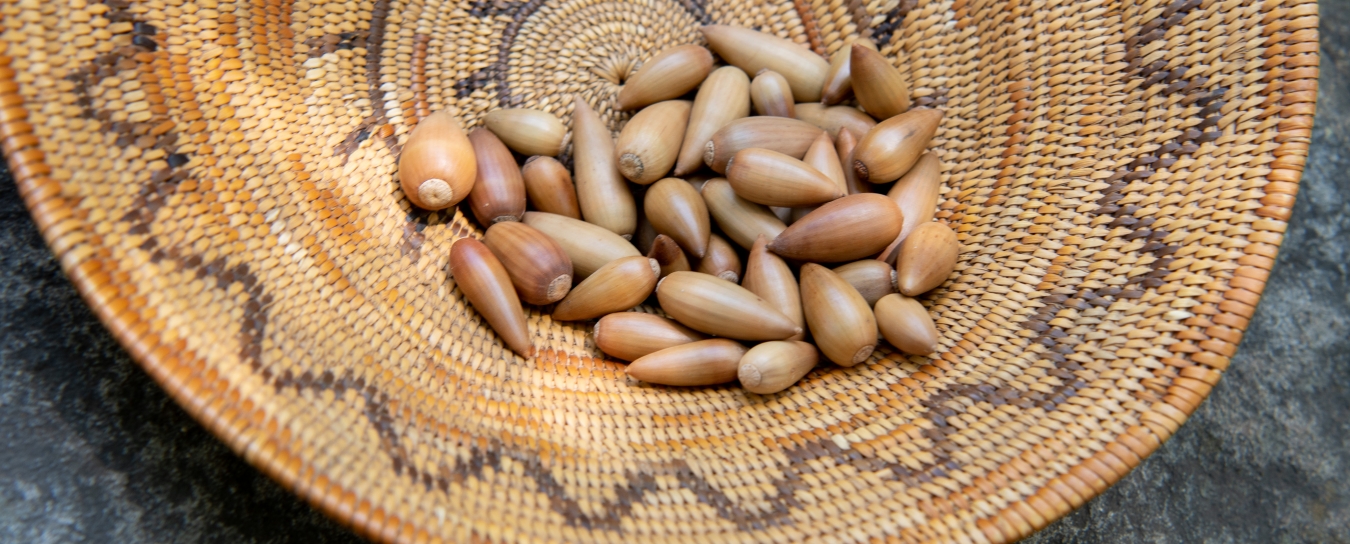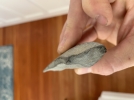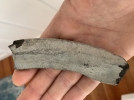
Anthropology
Check our anthropology FAQ for information about artifacts and more. Our Chumash Life pages for teachers and students provide a basic introduction to some aspects of traditional daily life.
- Anthropology
- Rocks & Fossils
- Invertebrates
- Vertebrates
- Botany
- Astronomy
- Fungi
- General
- Recently Asked
Chumash tool?
Dear museum scientists,
while camping on Paradise Rd near the Santa Ynez River in August, I found what appears to be a tool of some sort in the dry river bed. I am hoping to hear if it deserves further investigation or is just an interesting looking rock.
thanks,


Curator Response
Hi Bret,
You ask whether this may have been a tool or "just an interesting looking rock." The latter is such a common designation that researchers have an acronym for it: JAR, or "just another rock."
Based on your photo, this looks like JAR. If the area of the river or creekbed where you picked it up is traversed by vehicles, cattle, or hikers, it may be a "roadifact." Trampling against the other rocks and cobbles would break off the weaker edges of an irregular rock like that. In general, a river or creekbed is not where you'd expect to find a pristine sharp-edged item. The tell-tales of a prehistoric flaked tool would likely be worn off by hundreds of years in a creek bed (even currently dry ones experience occasional flows that tumble and smooth sharp edges).
If you took this home, it’s probably actually good that it doesn’t look more than JAR! If you were camping in that area, it was likely on public land. Artifacts (i.e. human-made, as opposed to naturally-formed objects) found on public land can only be removed by researchers with restricted permits that ensure what they remove will add to public knowledge rather than taking away from it. State parks and national forests, for instance, allow for anyone to pick up most interesting items to examine or photograph, before returning them right back to where they were. If the item is the kind of fancy thing that someone might pick up and carry away, and it’s right on a trail, sometimes it’s good to move it just off a trail a couple feet. I always recommend contacting a park ranger to let them know where it is, so they can send one of their specialists out to document it and examine the surrounding context. Leaving items for researchers to study in context means we can all learn more about their history and cultural value.
So there is a bright side to this being JAR. Hopefully you also enjoyed learning some new words, JAR and roadifact. Speaking of words, one of my colleagues at the Museum is a German speaker and noted that your last name could be translated as "knock the rock," so your name is very appropriate to your question.
Thanks for reaching out to us.
Stay curious,
Associate Curator of Anthropology Brian Barbier, M.A.

